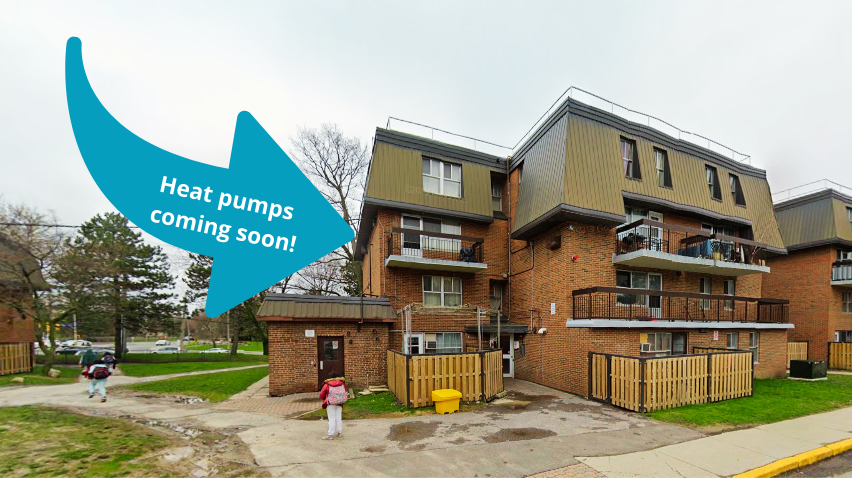One new concept is completely changing the way we do retrofits at TAF.
When I first joined our retrofit team three years ago, we had already designed and implemented energy efficiency retrofits in about 10 social housing buildings. We knew that we needed to go deeper with energy savings, and we knew we needed deeper collaboration with residents and our partners, but we needed to turn our process on its head to make it happen.
We’re about to start a new retrofit project and I’m excited to put into practice everything we’ve learned over the past decade working on multi-family buildings. On the surface, this project is similar to others I’ve worked on at TAF. It’s a Toronto Community Housing townhouse complex in North York which is home to around 175 families. We’re planning to install a heat pump system, targeting 40% or more reduction in carbon emissions, and we’re implementing measures to improve indoor environmental quality. What makes this project different is our approach.

Integrated approach to design and delivery
Integrated Project Design (IPD) is an approach that integrates people, systems, business structures and practices into a process that collaboratively harnesses the talents and insights of all participants to optimize project results, increase value to the owner, reduce waste, and maximize efficiency through all phases of design, fabrication, and construction.
Often when we think of building retrofit projects, we think of tangible things such as installing a new building technology, but the processes behind the retrofit can be just as innovative and transformative for the building industry. What I find innovative about the IPD approach is the idea that all partners share the risks, as well as profits, and if the project comes in under target cost those additional savings are shared as well. To me, this provides a powerful incentive for collaboration between owner, designers, and contractors, driving better results.
Since TAF is aiming to see 3,000 multi-residential units in the retrofit design or construction phases this year, embracing a deeper IPD approach to retrofits can help us do more with less. Although this approach may seem new and unusual today, our hope is that we can accelerate more deep retrofits by adopting and encouraging others to use this approach.
We are in the early phases of this North York retrofit, and I am really excited to have this opportunity to immerse myself in the new process. I will make sure to update you (with plenty of heat pump action photos) along the way!

Check out other posts in the retrofit diary series.


Exciting work, Kaitlin! Let me know if there’s any way I can help! Would love to know how the energy savings are modeled. Are you using HOT2000? Do these homes get an EnerGuide energy label at the end?
Thanks for your comment Abraham! We follow IPMVP methods for measurement and verification of energy savings, which usually involves both whole-building utility bill analysis and some supplemental metering at a systems level. Right now we’re still at the very beginning of this project—we’re exploring possible measures and haven’t started design yet!